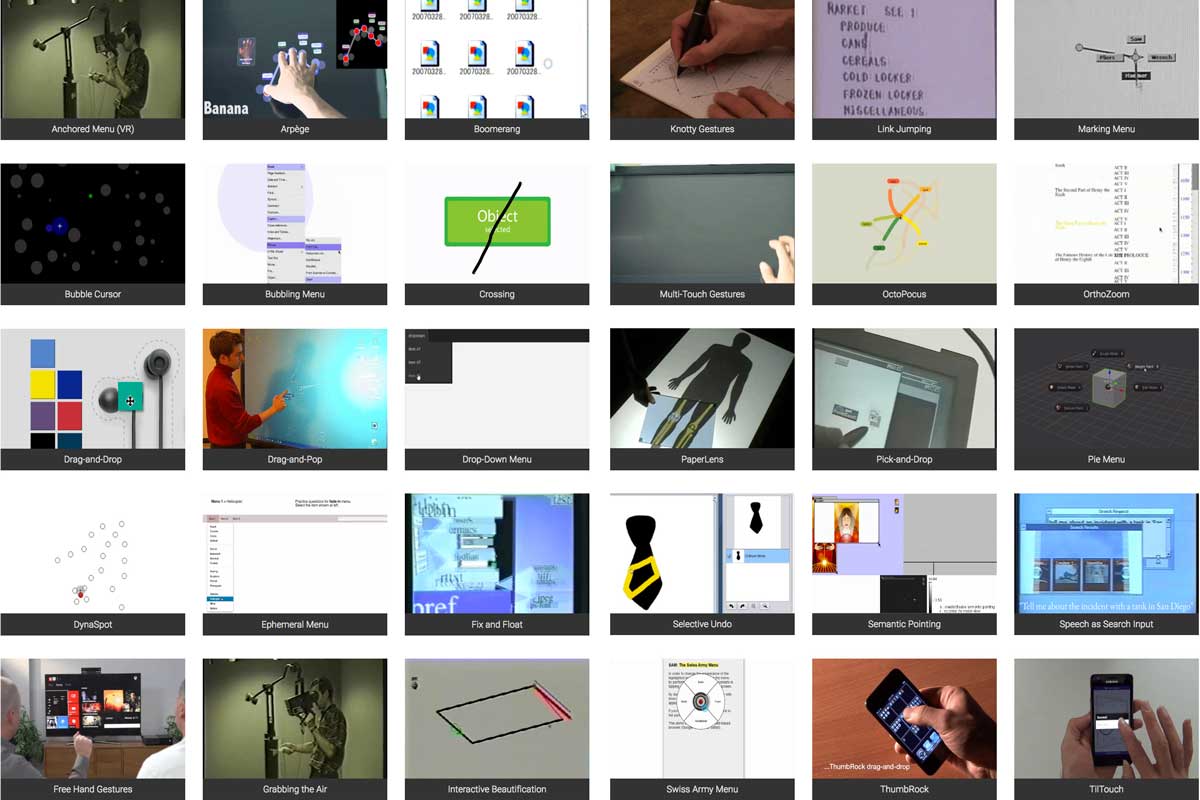The Interaction Museum is an online collection of interaction techniques developed by HCI research. It was originally proposed in 2005 by Wendy Mackay, head of the ExSitu group at Inria Research Lab.
Design challenge
Interactive system researchers and designers face a common problem: unlike other design fields (architecture, industrial design, graphic design), we have no shared repository for viewing and comparing interaction techniques. We also lack a common historical archive that tracks the origins and advances of key technologies, many of which we now take for granted in our interactive devices. Because interaction is dynamic, we need a dynamic and interactive medium to view and understand it. Videos and interactive software are ideal for illustrating interactive systems, but to date, we lack a curated, coherent and easily accessible collection. Our goal is to create a structure for archiving interaction techniques and a process for collecting and new innovations as they are created, in a form that facilitates access for interaction designers, students, professors and researchers.

Interaction Museum
The Interaction Museum is a collection of diverse interaction techniques and systems that draws from the Human-Computer Interaction research literature, in a form that is accessible to practitioners, students and other HCI researchers. The hci.museum.lri.fr website currently contains a set of interaction techniques that can be searched and compared, with video examples. The Interaction museum will also host exhibits that provide edited presentations of selected material, for professional, educational or research purposes, e.g., interaction techniques for small displays. In the longer term, we view the Interaction Museum as a novel on-line publication for HCI conferences that can offer a consistent outlet for preserving advances in interactive systems.
Audiences
The Interaction Museum is designed for industry practitioners, teachers, students and researchers. Practitioners will have access to a wide collection of existing interaction techniques, that can serve as inspiration or comparison as they develop their own designs. The Interaction Museum will also provide an outlet for practitioners to share their novel ideas with the research and design community, without going through the standard print publication process. Teachers will be able to select specific examples that illustrate HCI concepts and students will be able to search the Interaction Museum to help them with course projects. In addition to contributing material, researchers will be able to search and reference other interactive system designs and use the database for developing, applying or testing interaction models and theories.
Contents
The Interaction Museum is currently hosted by Inria and the University of Paris-Saclay, with support from the ERC CREATIV and ERC ONE projects. We have created a standard format for meta-data about each interaction technique, to facilitate searching and comparison. The current set focuses on graphical interaction techniques, because they are of interest to both practitioners and researchers and are the easiest to define. In the future, we hope to include input and output devices, more general interactive systems, tools, etc.
Users will be able to search for individual interaction techniques directly or via exhibits. For example, a historical exhibit would present a chronological view of certain interaction techniques. An exhibit on interaction with mobile devices might include examples of specific designs as well as research results on human sensori-motor capabilities relevant to small-screen displays. Researchers and graduate students will be encouraged to publish different ways of classifying the contents of the Interaction Museum, e.g., taxonomies of interaction techniques or the use of Fitts' law to compare pointing-based interaction techniques.
Our goal is to create a living museum in which anyone can contribute both new entries and exhibits, but we also want to ensure high quality contents. The current set of interaction techniques are from research published in top ACM/SIGCHI conferences. We plan to create a volunteer editorial board to monitor new entries, ensuring that they are accurate and sufficiently distinct from other entries, with appropriate cross-references and metadata. They will also check new entries and exhibits for validity. However, we need a review process that is as lightweight as possible, while ensuring the high quality of the interaction museum's content. Please let us know if you are interested in contributing to the Interaction Museum or in participating in the review process.
- Your Name?